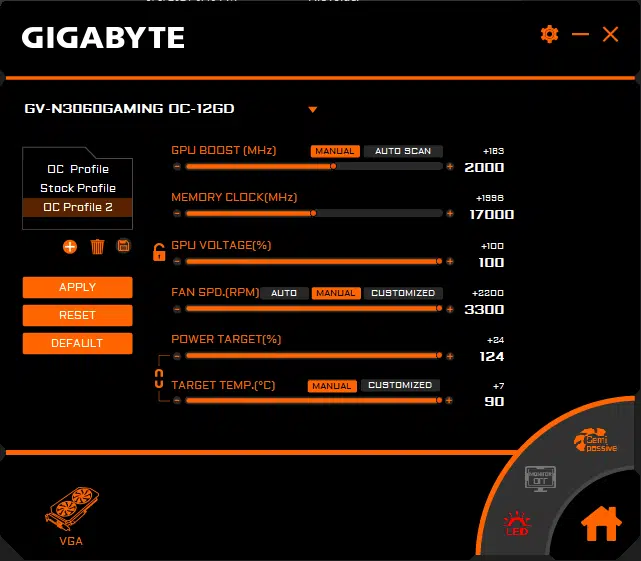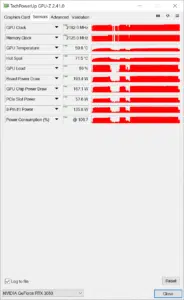
Introduction
NVIDIA announced the GeForce RTX 3060 video cards to the public in January 2021 with availability starting February 25th of that same year. You can check out our launch review with all the juicy details on the GeForce RTX 3060 here which includes 12GB of VRAM. NVIDIA set the MSRP of the GeForce RTX 3060 at $329 US, but custom partner models will be vary based on add-in-board partner builds and features. On our test bench for review today is the GIGABYTE GeForce RTX 3060 GAMING OC 12G GV-N3060GAMING OC-12GD video card revision 1.0.
The NVIDIA GeForce RTX 3060 GPU is built using the Samsung 8nm process and based on the NVIDIA Ampere architecture. We have a total of 28 SM’s, 3,584 CUDA Cores, 48 ROP’s, 112 TMU’s, 28 RT Cores (2nd gen), and 112 Tensor Cores (3rd gen). The boost clock is set at 1777MHz. This silicon is coupled with 12GB of GDDR6 memory on a 192-bit bus running at 15GHz and it provides 360GB/s of total memory bandwidth. The TDP is 170W for this midrange silicon.
GIGABYTE GeForce RTX 3060 GAMING OC 12G
The subject of today’s video card review is the GIGABYTE GeForce RTX 3060 GAMING OC 12G revision 1.0 version. The revision 1.0 version indicates that this is not a limited hash rate version. There is a revision 2.0 version which is a limited hash rate version available. This mid-range offering from GIGABYTE eschews much of that gamer aesthetic and provides a more subdued look compared to some other offerings in today’s market. RGB is still in the mix although to a much lesser degree than other cards, with a single area of illumination where the GIGABYTE text sits.
This model from GIGABYTE sits towards the middle tier of their GeForce RTX 3060 series product stack, with only the GIGABYTE GeForce RTX 3060 AORUS ELITE 12G with a 1867MHz boost and GIGABYTE GeForce RTX 3060 VISION OC 12G with a 1837MHz boost sitting above the subject of today’s review. Moving past that we have the GIGABYTE GeForce RTX 3060 Eagle OC 12G with a 1807MHz boost clock, and its non-OC edition sibling the GIGABYTE GeForce RTX 3060 EAGLE 12G rounding out the bottom of the pack with a reference boost clock of 1777MHz.
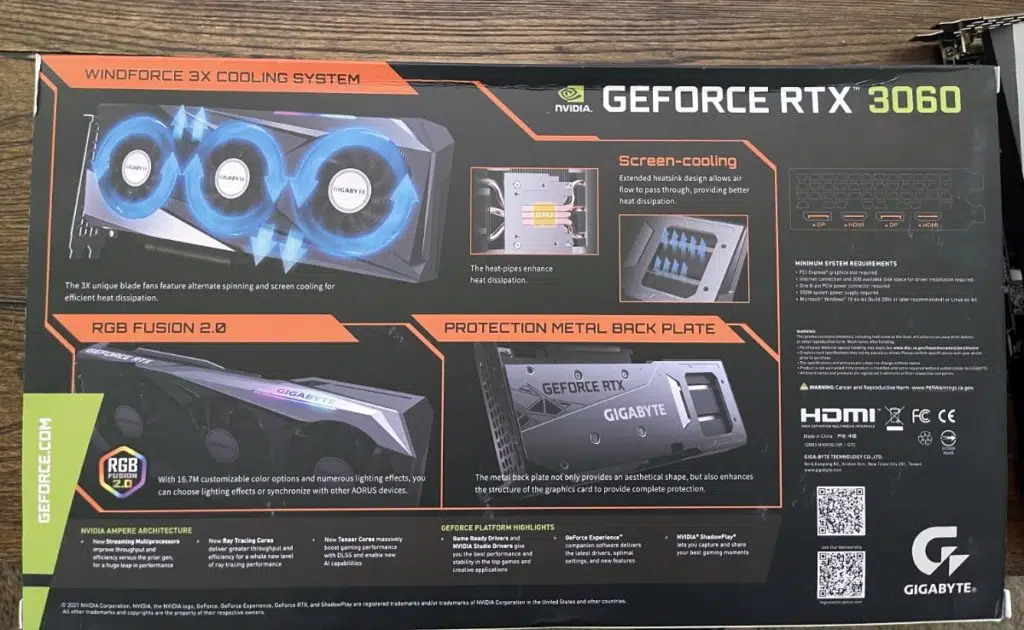
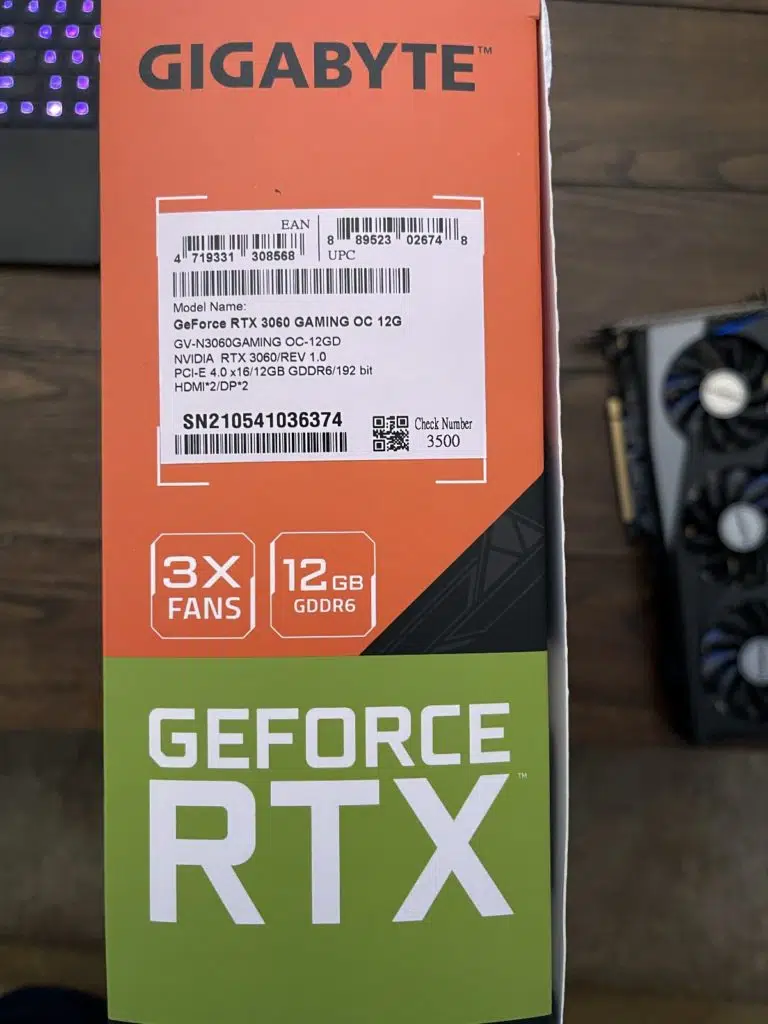


GIGABYTE GeForce RTX 3060 GAMING OC 12G Specs
Specifications-wise, on this specific model, GIGABYTE not to stray too far from what the NVIDIA reference design calls for, with a slightly higher boost clock speed of 1837MHz versus the 1777MHz default specification. Memory specifications are the exact same as what is called for within the reference design set out by NVIDIA, meaning most of the other changes from the reference design lie within the custom PCB and cooling implemented by GIGABYTE. All of this is backed by a 3-Year limited local warranty according to GIGABYTE.
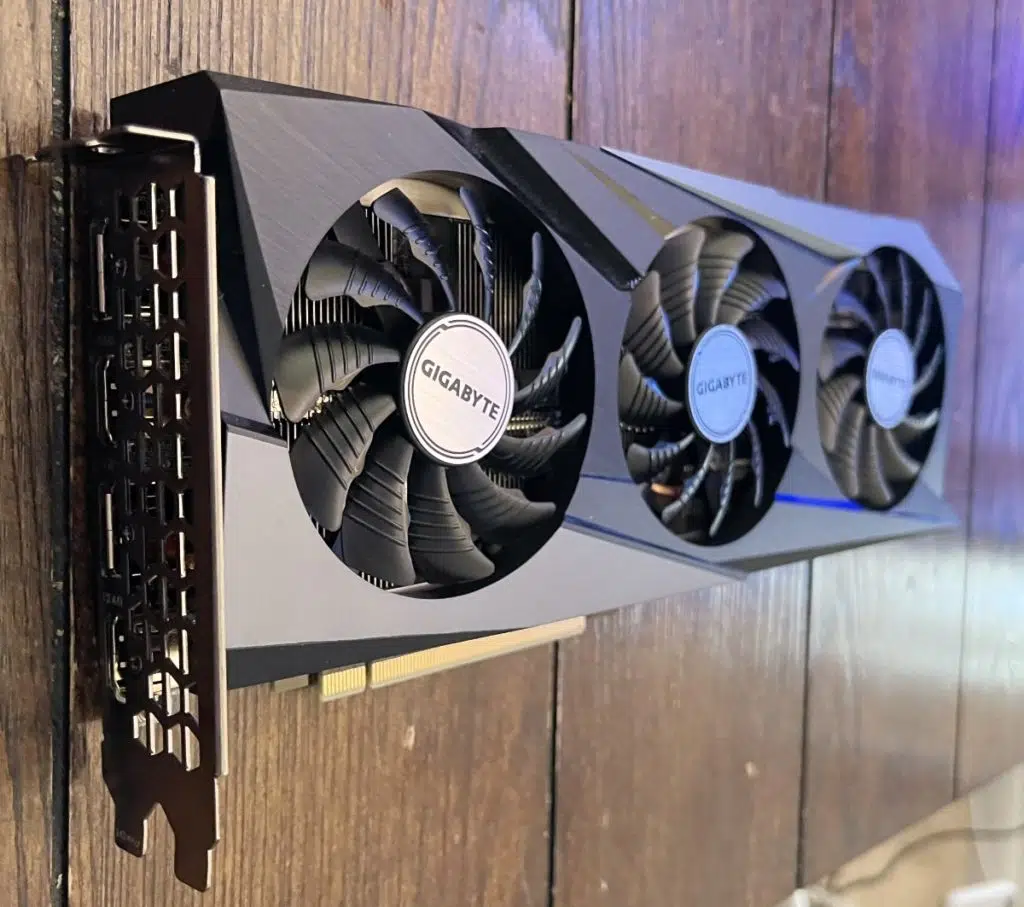
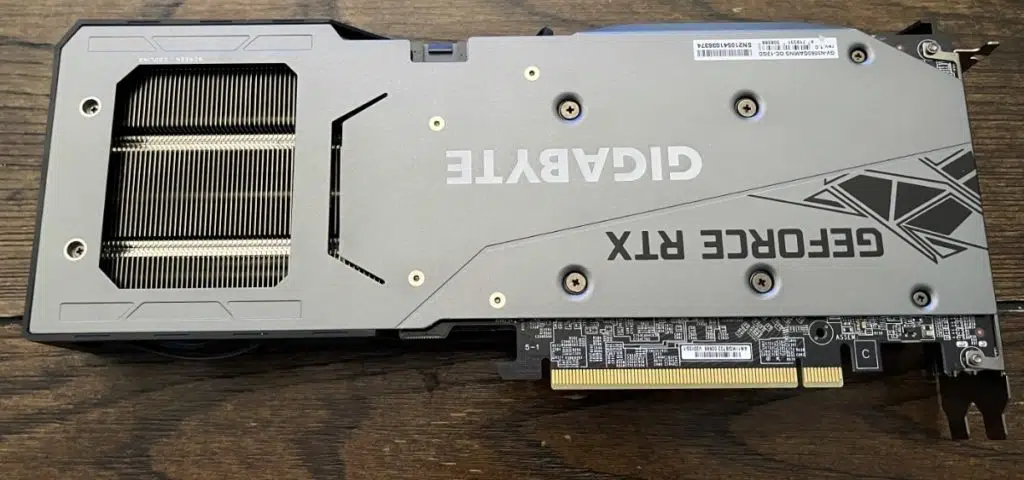


In this instance we see GIGABYTE utilizing a triple-fan cooling system called the WINDFORCE 3X Cooling System with alternate spinning fans and a unique blade fan design with stripes and curves. The three unique 80mm fans utilize alternate spinning directions for reduced turbulence and increased air pressure. Atop of that, GIGABYTE has implemented what they are calling Screen Cooling, this is simply a pass-through for air in the rear of the card to allow for better heat dissipation. The heatsink extends well past the PCB to allow air to pass through both sides. This extends the length of the video card by quite a bit, the PCB itself is rather small.
Interestingly GIGABYTE claims to use a Graphene nano lubricant to extend the lifespan of the fans by 2.1x. This puts these fans close to the lifespan of double ball bearing fans albeit with a lower noise profile. We also see 3D Active Fan technology which allows the fans to turn off during low load or a low power game. Finally, GIGABYTE utilizes an automated production process to ensure high quality on the PCB and eliminates sharp protrusions of the solder connectors. All of this is powered by a single 8-Pin PCIe cable, GIGABYTE recommends pairing this card with a PSU capable of at least 550 Watts.
GIGABYTE couples those fans with 3 composite copper heat pipe cooling system using what GIGABYTE calls Heat Pipes Direct Touch, in other words, the heat pipes make direct contact with the silicon die. This direct cooling implementation also manages to make direct contact with the VRAM via a large metal contact plate. Included with this model is a full metal backplate for increased rigidity. GIGABYTE has seen fit to increase the quality of the power phase design which in turn allows the MOSFET to operate at lower temperatures. Each MOSFET is designed with load balancing and an over-temperature protection design.
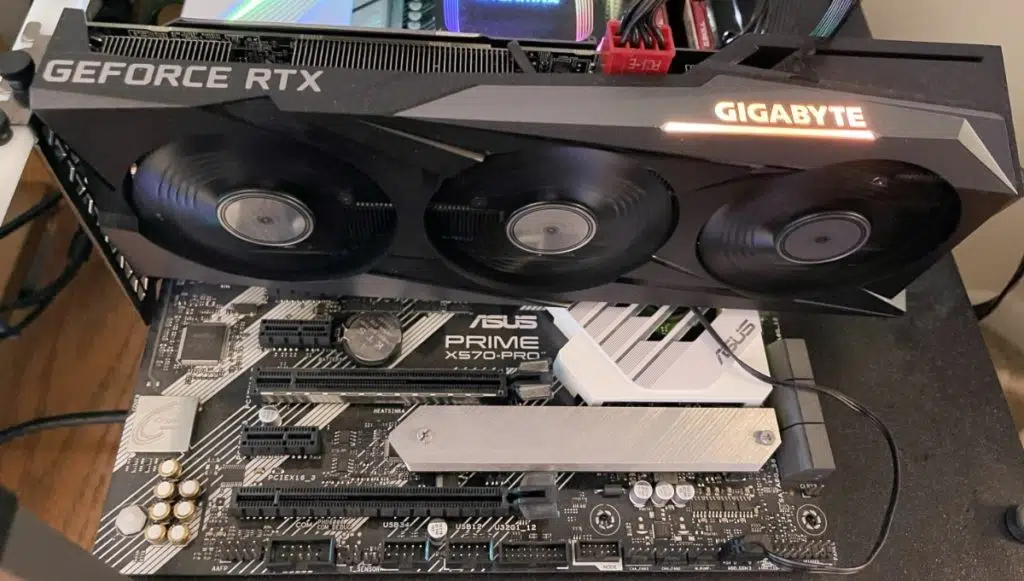

Compared to the actual size of the PCB, this particular GIGABYTE card is fairly large due to the added heatsink and shroud length, and triple-fan design. Coming in at a length of 11.1 inches (282mm), a height of 1.6 inches (41mm), and a width of 4.6 inches (117mm) this is a particularly large video card for the GeForce RTX 3060 GPU, it’s a lot of card for the RTX 3060.
GIGABYTE has seen fit to include RGB Fusion 2.0 on this card, giving the user 16.7M custom color options and many different lighting effects. RGB Fusion gives the user the option to synchronize their lighting with other AORUS devices. Keeping on with the software features we also have AORUS Engine which allows the user to control overclocking parameters like clock speed, memory speed, and voltage just to name a few. On the connectivity, front GIGABYTE provides you with 2 HDMI 2.1 ports, and 2 DisplayPort 1.4a ports.
Gaming GPU Frequency
Before we overclock the video card, it is important that we observe and record the baseline GPU frequency one can expect from this video card. This information is important to anyone who doesn’t plan to overclock, to know what you are getting out of the video card out-of-the-box. Our process for recording the GPU frequency was to drive around in Cyberpunk 2077 at 1440p with Ultra settings while recording GPU clocks with GPU-Z. During all testing, the ambient room temperature was kept at 72F.

It’s important to remember that our rated boost clock is specified at 1837MHz from the factory, so it’s safe to say we had a fairly impressive showing for our review card, with the lowest reported clock speed of 1912MHz. Average clock speeds reached 1947MHz, with maximum reported clock speeds reported reaching 1987MHz. These are respectable results, with our card managing to stay 75MHz above the boost clock at minimum and 100MHz above the boost clock on average, and reaching peaks of 150MHz above its boost clock.
These numbers look even better when compared with NVIDIA’s conservative 1777MHz boost clock specification. Here we have minimums that are 7% higher, our averages are 9% higher, and our maximums are 11% higher than the NVIDIA reference boost clock. Throughout all of our testing, we saw GPU-Z reporting maximum Hot Spot temperatures of 75C, averages of 74C, and a low of 70C. These are safe temperatures, but certainly not the lowest temperatures we have seen when testing GeForce RTX 3060s. The Board Power Draw is 172.6W and the GPU Chip Power Draw is 153.2W with the TDP at 101.6%, so it’s right at the edge by default.
Overclocking the GIGABYTE RTX 3060 GAMING OC
For overclocking we will be utilizing GIGABYTE’s AORUS Engine overclocking software. The software itself is fairly simple, with sliders for core clock, memory clock, voltage, fan speed, power target, and target temperature. AORUS Engine also gives a few more features like the ability to manage RGB LEDs and its 3D Active Fan technology, allowing you to keep the fans spinning 24/7 if you want.
As expected, the voltage slider was locked but once pressing the lock icon unlocks voltage and allowed us to adjust it. We quickly went to work tweaking settings and running stress tests to check for stability, both in a Time Spy stress loop, as well as in real-world gameplay testing, utilizing a selection of game titles from our review suite.
Here is how to overclock the GIGABYTE GeForce RTX 3060 GAMING OC 12G video card. This card proved to be tricky to overclock at first, with a +183MHz boost clock increase acting stable in a few Time Spy Extreme stress tests and several games before exhibiting issues in a few titles. We ended up having to bring the overclock down slowly by 1MHz increments before reaching a true stable overclock of +163MHz on the GPU core. This equates to a 2000MHz boost clock according to GIGABYTE’s own software.
Of course, we did not stop there, with our memory getting a healthy boost of 1998MHz, pushing it up to 2125MHz, or 17GHz, getting our total memory bandwidth up to 408GB/s. This was all achieved by setting the power and temperature targets to their maximum and turning off the passive fan technology while cranking up the fan speed to 100%. GPU-Z indicated that we were limited due to hitting the max operating voltage and max total power limit while stress testing this card. Needless to say, the card got loud, but we could see this solved with a simple custom fan curve profile.
Overclocked Gaming GPU Frequency

Taking a look at our graph shows the expected increase over the stock result, but it’s notable how stable the clock speeds were throughout the duration of the test. Our minimums only got as low as 2137MHz, which is an 11% increase over our stock minimums. The average clock speed increased to 2173MHz, which amounts to an 11% increase over the average stock result of 1947MHz. Maximums peaked ever so slightly higher at 2182MHz, which ends up being 9.3% faster than the stock maximums of 1987MHz.
According to GPU-Z we hit this overclock at a GPU temperature of 59.6c, and a Hot Spot temperature of 71.5c. Granted, the fans are at 100%, but these are very cool temperatures for this high overclock, so the cooler is working well. Board Power Draw increased to 193.4W and GPU Chip Power Draw increased to 167.1W.
Review System Setup








